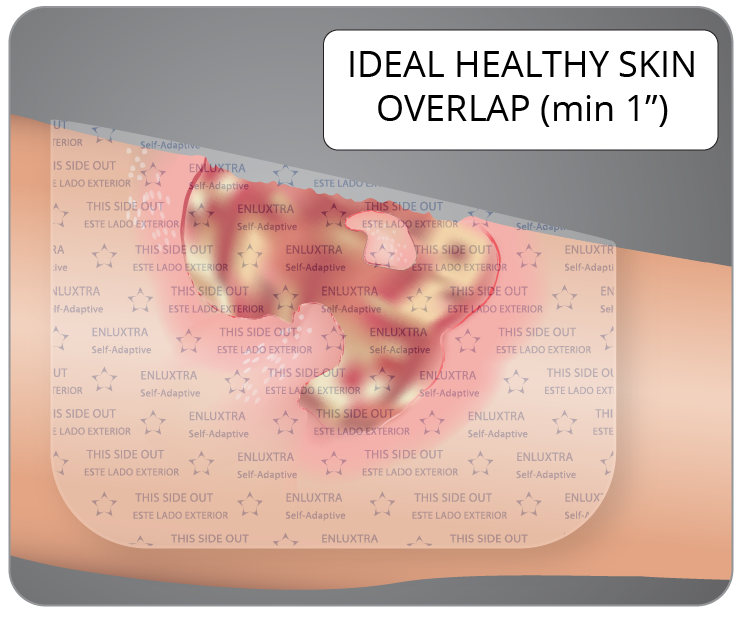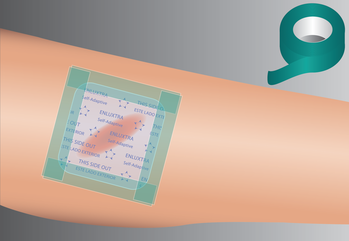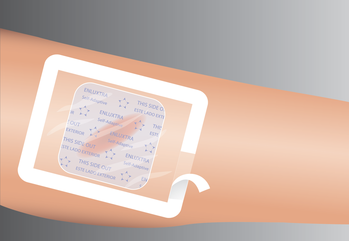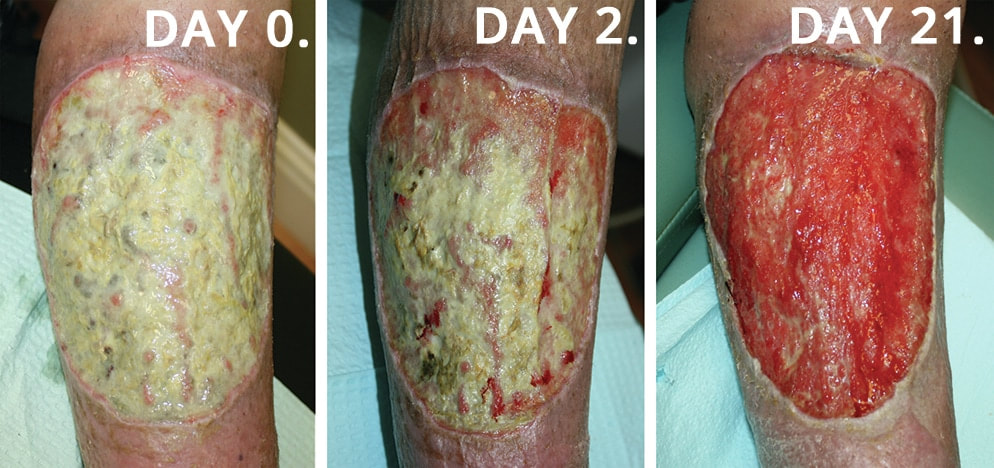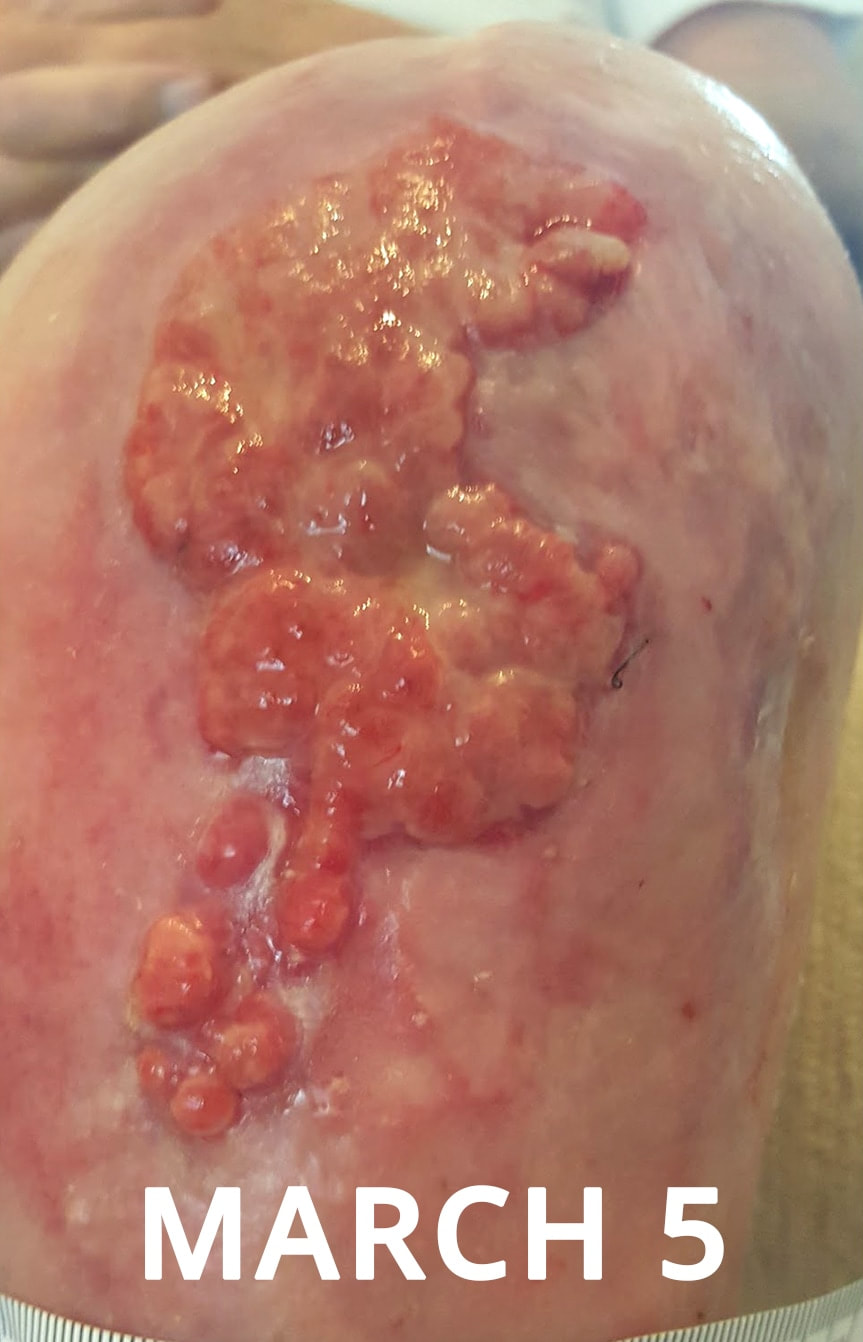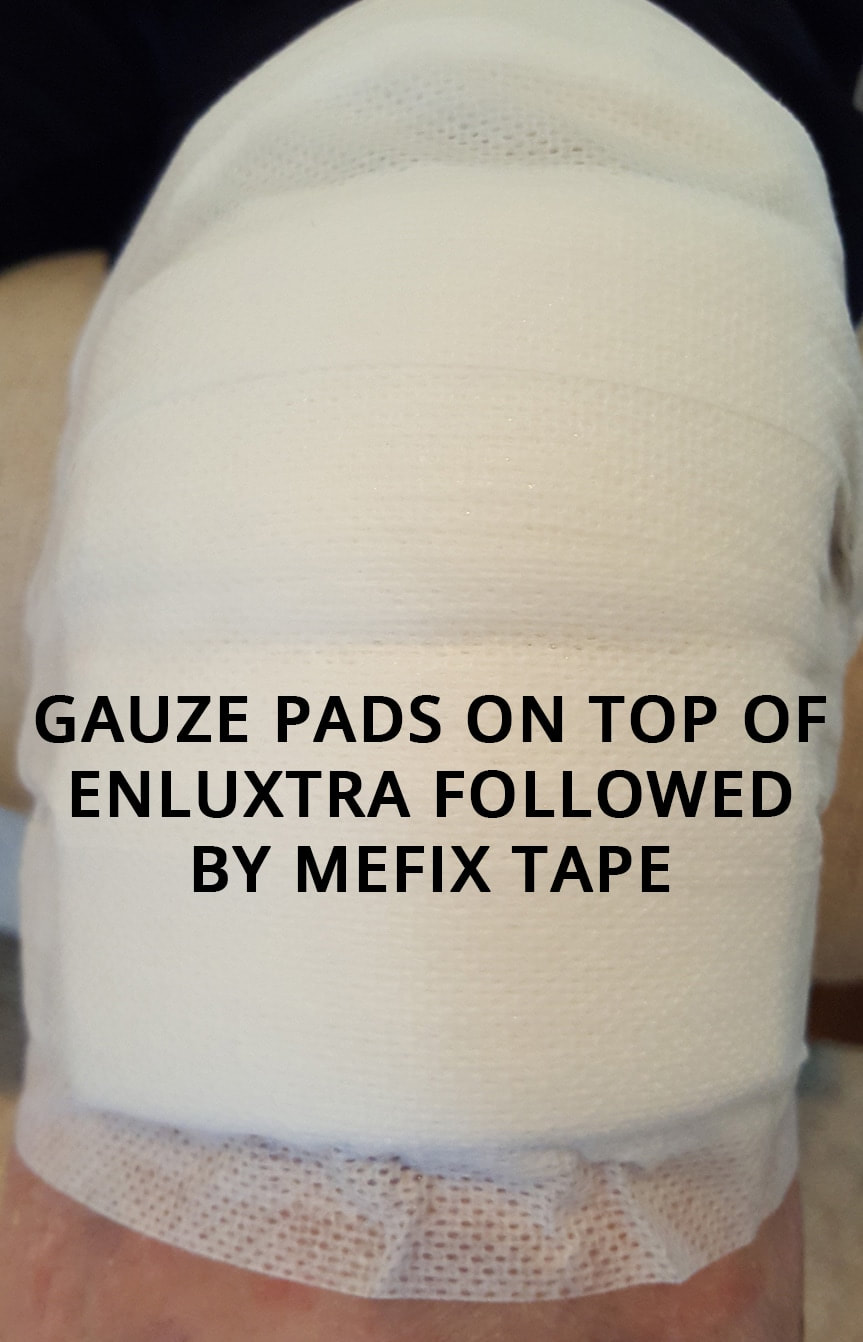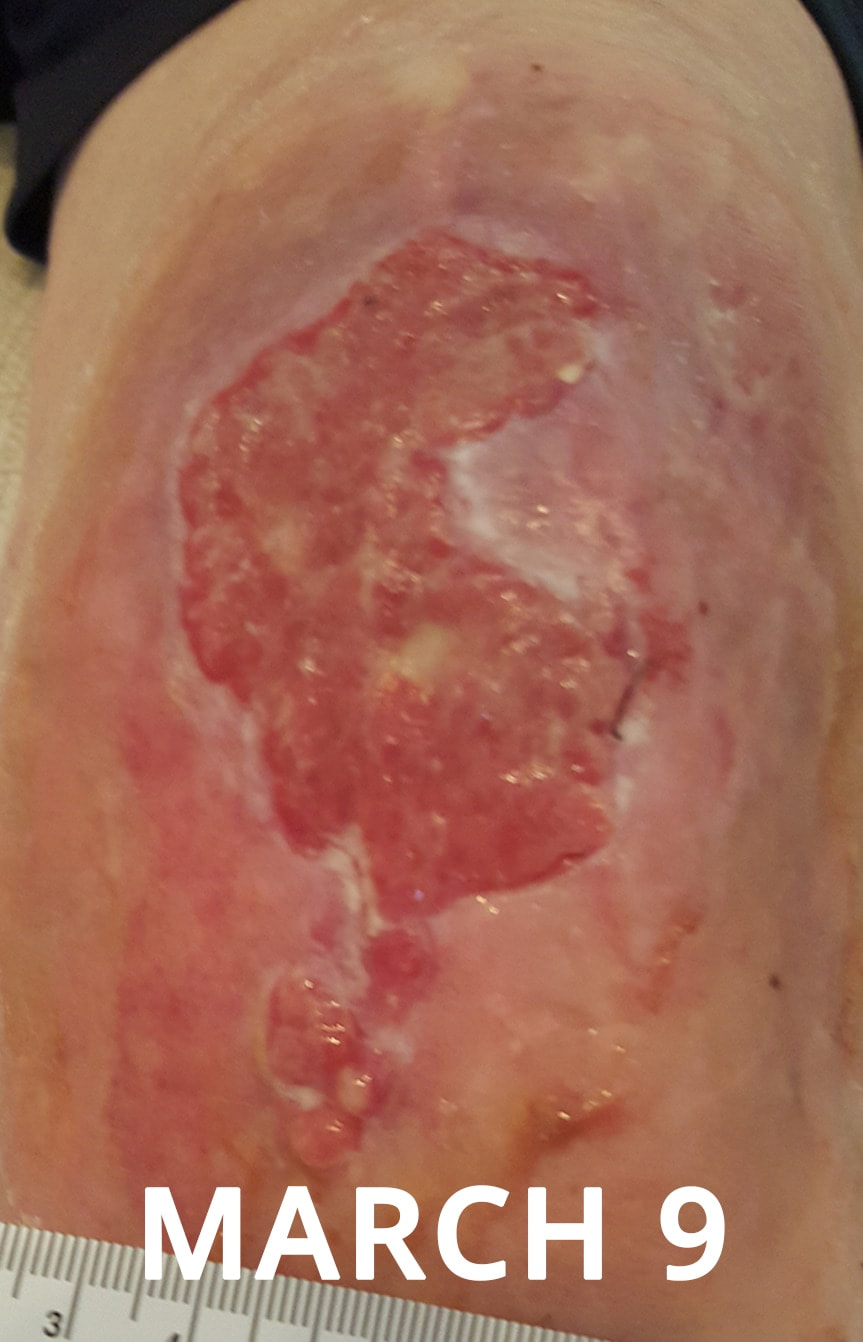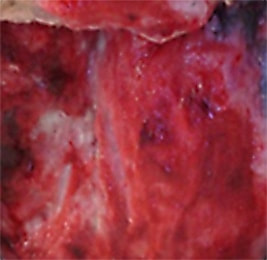RESOLVE AN ISSUE
If you are experiencing an issue in the course of Enluxtra dressing treatment, you will find help here.
Live clinical support is just a phone call away: 888-519-2297
Live clinical support is just a phone call away: 888-519-2297
Click the topics below to troubleshoot issues.
MACERATION
With correct usage of Enluxtra dressings your patients should never have maceration issues.
|
Follow these rules to prevent or correct maceration:
|
|
SLOUGH BUILD-UP
Active support of intensive natural autolytic debridement is one of the most impressive features of Enluxtra.
Slough build-up indicates that the dressing is in poor contact with the wound.
Make sure that Enluxtra dressing remains in full contact with the wound bed, peri-wound skin and the wound filler (if using) at all times.
Review these sections on the How to use page:
Slough build-up indicates that the dressing is in poor contact with the wound.
Make sure that Enluxtra dressing remains in full contact with the wound bed, peri-wound skin and the wound filler (if using) at all times.
Review these sections on the How to use page:
- IS ENLUXTRA IN CONTACT WITH THE WOUND BED?
- HOW TO REMOVE SLOUGH
Here's a typical example of slough removal progress with correctly used Enluxtra dressing:
WOUND NOT HEALING
If the drainage is controlled and the wound has healthy granulation with leveled edges but appears to be not healing, this indicates that:
- the wound may need offloading
- underlying conditions have to be addressed
- patient is not compliant
- other factors exist that are unrelated to the dressing
Examine and take measures to correct each of these points and make sure that Enluxtra is continued to be used correctly as well.
- the wound may need offloading
- underlying conditions have to be addressed
- patient is not compliant
- other factors exist that are unrelated to the dressing
Examine and take measures to correct each of these points and make sure that Enluxtra is continued to be used correctly as well.
FOUL ODOR
Wound odor is usually a byproduct of bacterial action inside the wound. Removal of necrotic tissue hosting the bacteria inevitably results in disappearance of the associated foul odor.
Refer to the SLOUGH BUILD-UP section above and to the following sections on the How to use page:
Refer to the SLOUGH BUILD-UP section above and to the following sections on the How to use page:
- IS ENLUXTRA IN CONTACT WITH THE WOUND BED?
- HOW TO REMOVE SLOUGH?
EXUDATE LEAKAGE
Enluxtra dressings absorb the maximum amount of exudate and retain it even under pressure.
Exudate leaking from under the dressing edge is usually caused by one of the following reasons:
Review the following sections on the How to use page:
Exudate leaking from under the dressing edge is usually caused by one of the following reasons:
- Dressing size is too small for the wound. Remember to always cover the wound bed, peri-wound skin and 1" of healthy skin, and never cut Enluxtra to the wound size and shape. Watch a short tutorial.
- Dressing was left on the wound for too long. You need to adjust the dressing change frequency to accommodate the flow of exudate.
- Non-recommended products were used under the dressing. Such products may block vertical draw and prevent the exudate from being absorbed.
- Dressing is poorly positioned. Assess drainage pattern upon dressing removal and adjust the position to allow for more skin coverage in the direction of the natural exudate flow. Watch a short tutorial.
Review the following sections on the How to use page:
- HOW TO SELECT THE CORRECT DRESSING SIZE
- CAN ENLUXTRA BE CUT OR TRIMMED?
- IS ENLUXTRA IN CONTACT WITH THE WOUND BED?
- WHAT IF A WOUND IS TOO LARGE?
- WHEN TO CHANGE ENLUXTRA DRESSING?
HYPERGRANULATION
Hypergranulation develops when the dressing fails to maintain full contact with the wound.
When applying Enluxtra dressing, always follow these practices:
Here's an example of a quickly resolved case of hypergranulation once the application technique was corrected:
When applying Enluxtra dressing, always follow these practices:
- Press the dressing down.
- If the dressing is tenting over the wound, place several folded gauze pads on top and use a wrap. Do not overtighten the wrap.
- IS ENLUXTRA IN CONTACT WITH THE WOUND BED?
Here's an example of a quickly resolved case of hypergranulation once the application technique was corrected:
VASCULAR WOUND BED
|
Vascular wound bed may look alarming but with Enluxtra treatment it is actually a good sign!
Wound bed vascularization is a necessary step before granulation. It is a transitional stage during which the wound bed is very delicate and may bleed on touch or on contact with a dressing. Is it a reason for concern? No! The vascular wound bed appearance is quite specific to Enluxtra applications and is most commonly observed in pressure ulcers - sacral, coccyx, buttock - and in venous leg ulcers (VLUs) under compression. |
This happens because of a very close contact of Enluxtra with the wound bed under full body weight or with additional compression. Wounds with heavy bio-burden are affected the most, as well as other wounds requiring frequent dressing changes.
What to do?
If you observe a vascular wound bed around 4th-7th dressing change, do not be alarmed. This highly sensitive condition should last only for a few (2-3) dressing changes, and then disappear after the wound bed has developed healthy granulation.
What to do?
If you observe a vascular wound bed around 4th-7th dressing change, do not be alarmed. This highly sensitive condition should last only for a few (2-3) dressing changes, and then disappear after the wound bed has developed healthy granulation.
ADVERSE REACTIONS
Although very rare, a few patients have reported irritation occurring while wearing Enluxtra. Do not automatically assume that this is an allergic reaction. Remember: Enluxtra is a hypoallergenic product.
If skin irritation occurs, simply go through the following steps:
NOTE: True allergic reaction occurs within 3 hours after application. Anything after 3 hours is likely skin irritation caused by exudate and must be addressed as such.
If a patient has an allergic reaction to dressing polymer materials, discontinue dressing use.
Frequently, placement of a non-adhering wound contact layer under Enluxtra known to be tolerated by the patient resolves the problem, and Enluxtra use can be continued.
If skin irritation occurs, simply go through the following steps:
- Check if the dressing size is large enough. If the dressing is too small, drainage could begin seeping out of the dressing edges onto healthy peri-wound tissue. This can cause pain and discomfort and the peri-wound tissue could begin showing signs of irritation often mistaken for allergic reaction.
- Ask your patient at what time this pain or discomfort occurred. Take the time of day and the day of wear into account.
Pain and discomfort around the fourth day of wear might be simply due to leakage from an overfilled dressing, and it might be time to change!
Discomfort occurring around 2-6 AM might be due to ischemic pain.
- Make sure irritation is not caused by any products being used in conjunction with Enluxtra. A patient's reaction to a topical medication might be amplified by Enluxtra.
These products may cause clogging of Enluxtra and impede the vertical draw of the material, preventing exudate from being absorbed into the dressing.
- It is important to avoid products which are not included in our ‘recommended list ’. You may find the list at the FAQ page.
NOTE: True allergic reaction occurs within 3 hours after application. Anything after 3 hours is likely skin irritation caused by exudate and must be addressed as such.
If a patient has an allergic reaction to dressing polymer materials, discontinue dressing use.
Frequently, placement of a non-adhering wound contact layer under Enluxtra known to be tolerated by the patient resolves the problem, and Enluxtra use can be continued.
|
|

